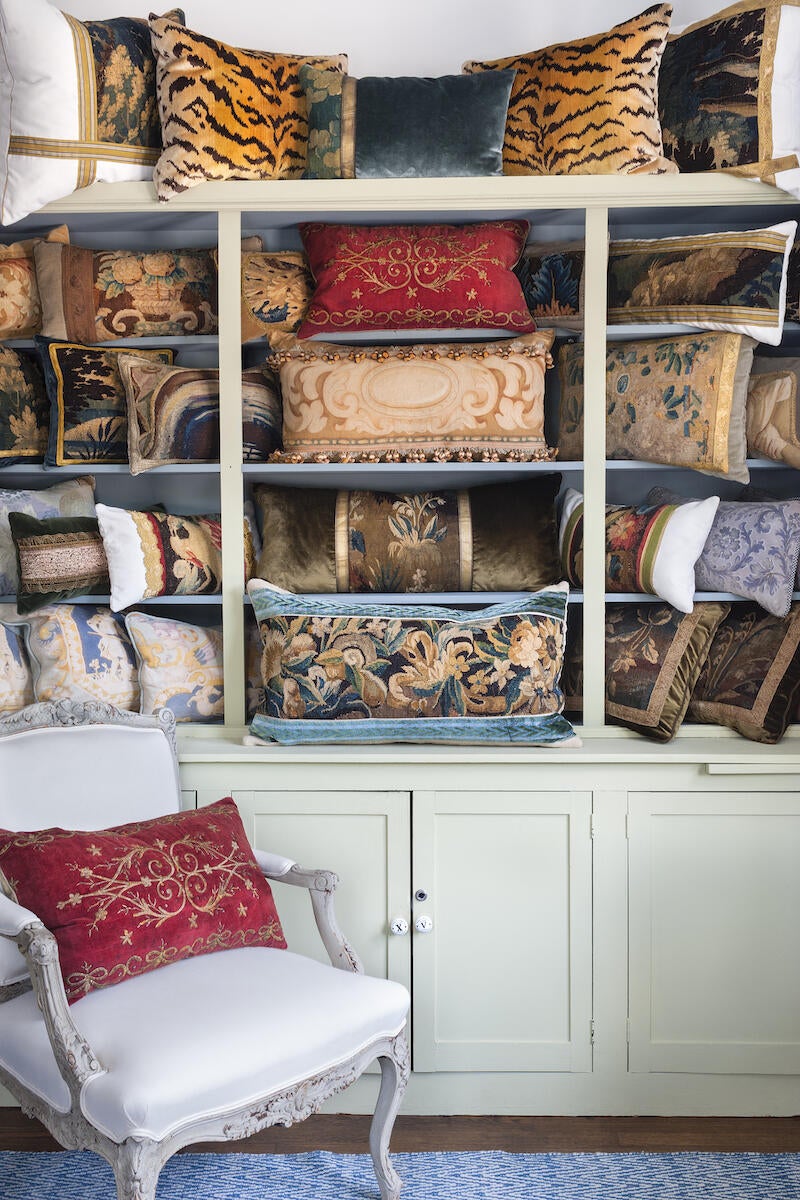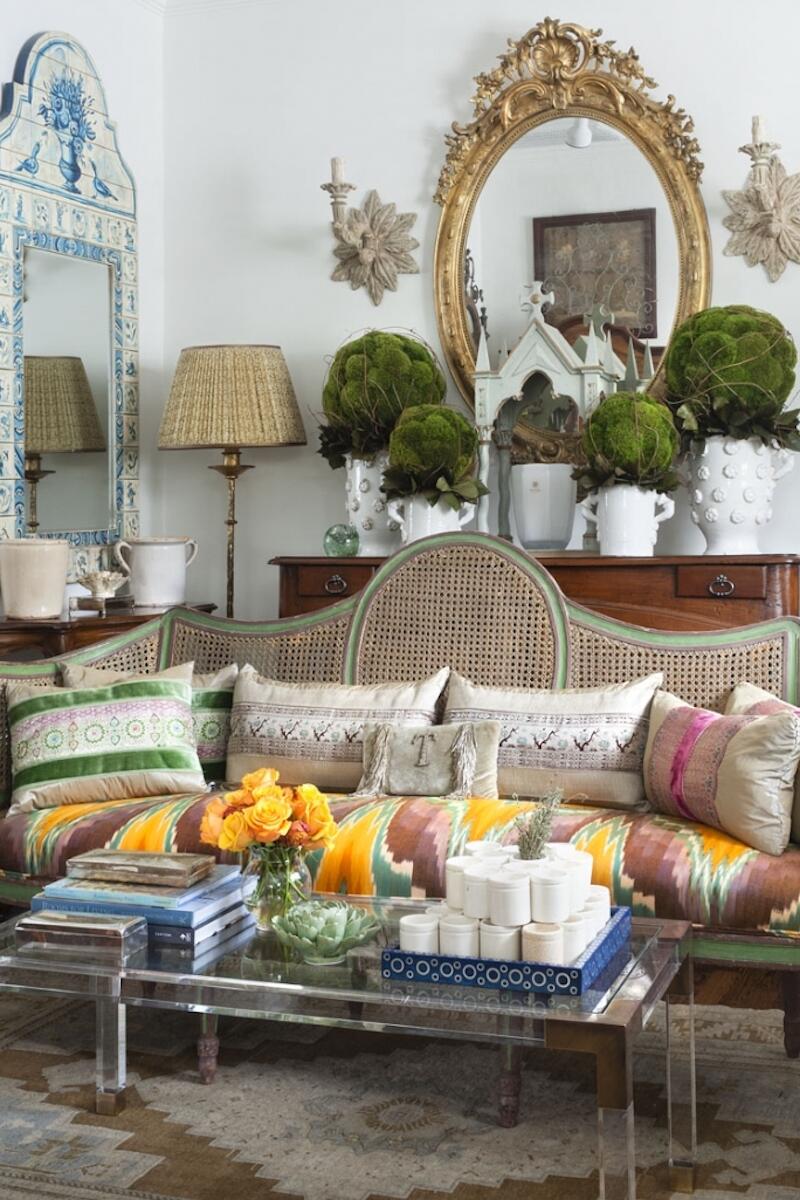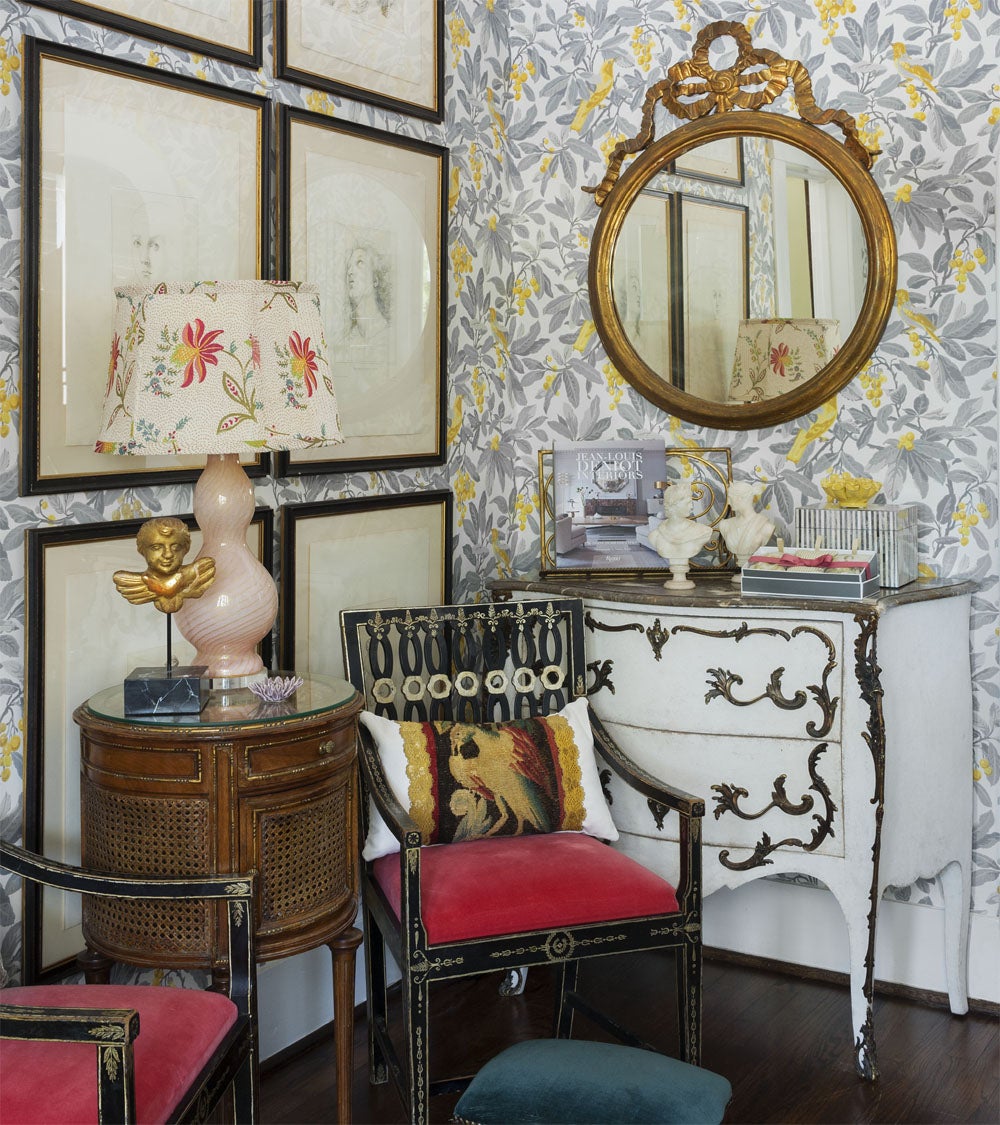In Business of Home’s series Shop Talk, we chat with owners of home furnishings stores across the country to hear about their hard-won lessons and challenges, big and small. This week, we spoke with Suzanne Duin, a full-service interior designer and the owner of Maison Maison, a home goods shop in Houston.

Over 25 years and six locations within the city’s River Oaks District, Duin has specialized in European antique furniture and accessories—particularly the latter, as she explains. Her team also creates a host of their own products, including ceramics, lampshades and decor items wrapped in marbled paper. Ahead, she discusses being a member of the “touch-feel” society, catering to the trade and worrying about the future (and present) of craftsmanship.
Tell me about your professional background before the store.
I graduated with a fine arts degree in interior design from the University of Texas. I went for the sales side of design because I liked pretty things. I went to work for [New York–based textile manufacturer] Maharam as a sales representative here in the Gulf Coast region. Loved that! After that, I lived in Europe, bouncing back and forth with my now ex-husband, until the children started coming. Then, in 1996, I brought my first container of furniture in from France. That launched Maison Maison. Prior to that, I only did design for my own personal homes and various small clients.
How would you describe the aesthetic of your store?
Still very French, but I would say more Continental. A classic expression for me is a “grand tour” kind of environment. I just buy what I like.
What are your methods for sourcing, and how have they changed?
Since I’ve been in this business, everything’s changed. When I first started, it was like shooting fish in a barrel. I’d go buy whatever I wanted, bring it home in a container, open up the container, and everybody wanted everything. It was very easy.
The internet changed all that. I knew 1stDibs was coming, so I positioned myself to be ready for them. We used to do trade shows and antiques shows, almost all of which have gone by the wayside. With the internet, the good news and the bad news is the world is my oyster, but it’s everybody else’s oyster, too. I didn’t really change how I sourced until probably about 2012. Of course, I’d been shopping long enough by then. If I couldn’t get to France, I’d just call my dealer in Spain and say, “Can you send me X number of blah?” That worked fine.
Then, the pandemic hit. I had already been shopping locally, meaning in auction, across the country, and that has worked well for me in the pandemic, though you don’t get all the fun little aha moments as much. I get more of the meat and potatoes: the classic five-drawer chests. I buy as much furniture as I need to keep the flow going. I don’t deal in as many case goods anymore as much as I do art accessories. Certainly, my antique textile pillows put my children through private school. I keep those going.
Would you say the pillows are your most popular item or category?
I think that we’re known for our finishing touches. We also do custom lampshades. That business has been doing quite well for us. It’s a dying art, yet it’s very popular. The custom lampshades might bring a designer in, then, while she’s there, she might pick up some art or pillows.

How much of your customer base is to the trade?
I would say 90 percent of our business is related to the trade. We’ve always offered the trade discount. I’ve tried to honor the trade. Even when I was buying container after container in Europe, I would be thinking about designer friends: “Oh, that’s perfect for her.” I’ll buy it knowing that they’re going to scoop it up. Again, the internet and Instagram have changed everything. There’s a whole host of new designers that have hit the market. Whether they have a degree or not, you have to honor their clients, too. I’ll always position myself to the trade.
Do you ever fear that people see something in your store, and then go online and find it cheaper? Or is that not a concern because you’re importing things no one else can import?
I think we have a certain aesthetic, and they either want it, or they don’t. As far as case goods, they could go price it somewhere else. If they can get it cheaper, so be it. As far as our lampshades, we pretty much cornered that market. The only thing I get irritated with is I find that sometimes people will [buy] our pillows, and then come back [to return them] after the weekend. If there’s a photo shoot, or somebody’s having a party, we’re very reticent—unless we know who it is. We’ve had designer friends who’ve said, “Hey, I need to zhuzh this up for a photo shoot. Can I borrow some things?” Sure.
I want to go back to the lampshades. You said it’s a dying art. How so? Why did you decide to make them?
My design practice was blowing up. It was 2015. I had a custom team and a spec-house team. Both women who led those teams decided to retire at the end of the year. I had to decide to either rehire and stay on the treadmill, or start thinking of something different as I move into retirement. I went to England with a friend of mine, [Houston-based designer] Lauren Hudson, who owns Wells Design. I realized there was this trend for fabric lampshades: Penny Morrison, Rosi de Ruig, Matilda Goad. I saw, “OK, it would complement everything we have in the shop.”
I set about starting to make the fabric shades. I’ve always done fabric shades for my clients because it’s really hard to find the craftsmen. Like furniture refinishing—to get a nice French polish, that’s a dying art. The millennials, they like it, but they don’t want to do it. We’re actually building our own workshop; I’m training people so that we can protect ourselves and keep moving forward with production. When they die, they’re gone.
What are your favorite items in the store?
I love textiles. Some textile remnant that I can frame up beautifully, I think that’s quite nice. It’s not just a piece of brown furniture. It’s something that’s got a soul to it, and you know hours went into producing this—hand-sewn and hand-painted, and definitely not mass-produced in China.
How are you handling inflation? Or are lead times or transportation bigger issues?
Well, for the first time I’ve been experiencing the dollar and the euro [on par]. That’s delightful. However, I will say: transportation issues. We bring in containers from Asia on a regular basis for our woven shades, and the transportation costs have been outrageous. They’re settling down now, but they’ll never go down to what they were before. That’s a headache because somebody’s got to eat that cost: It gets applied to cost of goods sold, or we have to absorb it.
Are there any challenges that you find are unique to Houston?
I go back to the craftsmen. It’s been difficult to get the next generation to see that they can actually make income. As an example, high schools no longer have shop class. Yet electricians, plumbers—those craftsmen can make quite a good salary and have steady work, because you always need a plumber. You always need an electrician. That doesn’t seem as sexy, I guess, as some other far-off and fun things. I don’t know. At my age, having raised children, and having grandchildren now, I’d rather have a steady income. It doesn’t seem as respected. It’s funny because my husband and I are renovating our own home right now. We’re interviewing painting contractors and one pulls up in a Cadillac Escalade, having just left the trainer. He has a multimillion-dollar painting company. The guy’s making money because he’s actually providing a service that is needed, daily. My plumbing contractor who I’ve known for, oh, 40 years, he’s retired and lives on a sailboat in the Caribbean. If we could somehow educate the new generation: “Hey, wake up.”


What do you think is the future of small businesses like yours? And has your answer changed in the pandemic?
When I started the business, I brought something that no one else could find unless they went over to get it. Now, so many people want e-commerce. I get it. We price differently for the e-commerce people because they don’t have any skin in the game. If you are a stocking dealer, you’ve put skin in the game, so you get a better price. I’ve always been from the touch-feel society. I want to be able to look at something; I don’t want to just buy it on the internet. The next generation, they don’t care. They just wanted the look. If they get tired of it, they throw it away. What you’re seeing now with the grandmillennials is, “Well, hang on. Actually, I think I could do something with Grandma’s china. I could hang plates on a wall.” I feel the pendulum is swinging back to allow people to respect the past and make their own look with something from the past. I’m happy to see that.
Maison Maison is currently in the smallest space we’ve ever been in: It’s 1,100 square feet, a cute little house. Then we have a 4,800-square-foot warehouse for our business operations, distribution of our shades, and the warehoused antiques inventory. It’s interesting, the clientele that we have. I am concerned about retail. We’ve lost so many small shops because either the rent got too high, and they figured out they could just sell on Chairish or 1stDibs, or they could stay home with their children. It’s sad that we’ve lost so many of the actual small businesses.
What is your relationship to the space you’re in now? Are you renting?
I am. Actually, this is my second run with the same landlord, who also happens to be a very dear, personal friend. Years ago, I could have made the decision to buy. I’m in a small house, a cottage. I could have bought the house, and I did not. It just wasn’t the right timing for me. I’ve spent an enormous amount of money, thousands and thousands of dollars on rent. I wonder what will happen with all these commercial buildings now. My middle son is working with a commercial developer: They’re retrofitting old office buildings into apartments. I think the shifting market has caused a glut of commercial properties—that and the internet. If you can sell [your product] on a platform, why would you want to take out the insurance, rent, the overhead of salespeople [for a physical store]? We just had a water pipe burst in our shop. We were out of business for a month and had damaged furniture. I mean, I get it taken off of my rent, but what a pain in the ass.
Can you tell me about your favorite type of day as a shop owner?
I like walking in the door of my shop. I have all of my career. I think it’s fun.
Homepage image: Duin says Maison Maison’s custom lampshades are a popular item | Courtesy of Duin




























